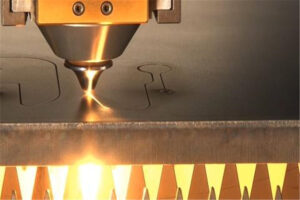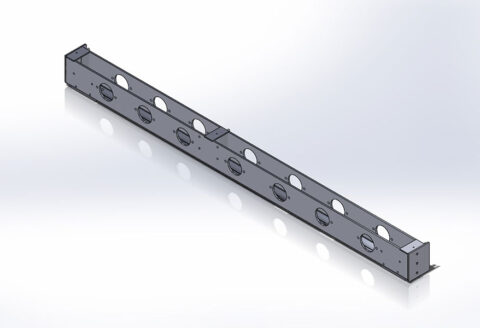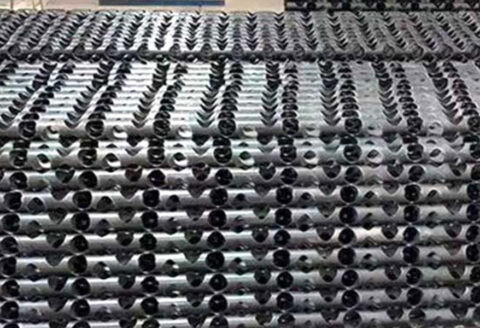1. Cutting material: refers to the technological process of obtaining a rectangular workpiece through a shearing machine.
2. Blanking: refers to the process of the workpiece being cut by LASER or punched by machine.
3. Blanking: refers to the process of using molds to obtain product shapes on ordinary punches or other equipment.
4. Punching: refers to the technological process in which the workpiece is processed by ordinary punches and molds.
5. Bending: refers to the process of forming a workpiece by a bending machine.
6. Forming: refers to the process of deforming the workpiece using a mold on an ordinary punch or other equipment.
7. Hole extraction: also called flanging, which refers to the process of forming a round hole on a workpiece using a mold on a common punch or other equipment.
8. Tapping: refers to the process of processing internal threads on the workpiece.https://www.zhaotube.com/
9. Hole reaming: refers to the process of processing small holes on a workpiece into large holes with a drill or.
10. Counterbore: It refers to the process of processing taper holes on the workpiece to cooperate with connecting parts similar to countersunk screws.
11. Pressure riveting: refers to the process of firmly crimping fasteners such as pressure riveting nuts, pressure riveting screws, or pressure riveting nut posts on the workpiece using a punch or hydraulic press
12. Expanding riveting: refers to the process of first countersinking the workpiece, and then using a punch or hydraulic press to firmly crimp the expanding rivet nut on the workpiece.
13. Pull mother: refers to the use of similar riveting process. The process of firmly connecting connecting pieces such as pop rivet nuts (POP) to the workpiece with a female gun.
14. Pull riveting: refers to the process of using a riveting gun as a tool to tightly connect two or more workpieces together with pull nails.
15. Riveting: The process of connecting two or more workpieces face-to-face with rivets. For countersunk riveting, the workpieces need to be countersinked first.
16. Punching convex hull: refers to the process of forming a convex shape of a workpiece with a die on a punch or hydraulic press.
17. Punching and tearing: also called; punching bridge refers to the process of forming a workpiece into a bridge-like shape in a punch or hydraulic press with a mold.
18. Stamping: refers to the process of stamping out characters, symbols or other imprints on the workpiece using a mold.
19. laser cutting: refers to the process of cutting off the corners of the workpiece using a die on a punch or hydraulic press.

20. Punching mesh: refers to the mesh-like holes punched out on the workpiece with a die on an ordinary punch or CNC milling china.
21. Flattening: refers to the process of transitioning from a certain shape of the workpiece to flat.
22. Drilling: refers to the technological process of drilling a workpiece with a drill bit on a drilling machine or a milling machine.
23. Chamfering: refers to the process of processing the sharp corners of the workpiece using molds, files, grinders, etc.
24. Leveling: refers to the process of using other equipment to level the workpiece before and after the workpiece is uneven.
25. Threading back: refers to the process of the second thread restoration of the pre-tapped workpiece.
26. Pasting protective film: refers to the process of protecting the surface of the workpiece with a film that can protect the surface of the workpiece.
27. Tear the protective film: refers to the cleaning process of the protective film on the surface of the workpiece.
28. Proof: Refers to the process of adjusting the processed workpiece.
29. Heat shrinkage: refers to the process of using heating equipment (heat gun, oven) to shrink the plastic covering the workpiece.
30. Labeling: refers to the process of attaching the label to the designated position of the workpiece.
31. Wire drawing: refers to the process of using wire drawing machine and abrasive belt to process the surface of the workpiece.
32. Polishing: refers to the process of using polishing equipment to brighten the surface of the workpiece.
33. Heat treatment: refers to the process of special treatment to improve the hardness of the workpiece.
34. Deburring: refers to the process of removing the burrs of the workpiece with a grinder, file and other tools during the sheet metal processing of the workpiece, so that the processing part of the workpiece is smooth and level.
35. Argon arc welding: refers to the process in which the workpiece and the workpiece are connected by an argon arc welding machine at the edge or seam of the workpiece. Among them, it is divided into intermittent welding, full welding, etc., which should be clearly marked on the drawing.
36. Butt welding: also known as: spot welding refers to the process of welding and connecting workpieces face-to-face by a butt welding machine.
37. Plant welding: refers to the process of firmly welding plant CNC turning china screws on the workpiece with a plant welding gun.
38. Welding and polishing: mainly refers to the process of making the welding scar of the workpiece smooth and level by using tools such as grinders and files.
39. Pre-treatment: refers to the process of degreasing and rusting the workpiece with electrolytic solution after finishing the sheet metal processing of the workpiece, before spraying paint or powder, and increasing the surface film (such as phosphating film) and cleaning the workpiece.
40. Dust scraping: refers to the process of using putty to compensate for defects on the surface of the workpiece, such as welding gaps or pits.
41. Ash scraping and polishing: mainly refers to the process of polishing the surface of the workpiece after scraping with a flat grinder or emery cloth.
42. Oil spraying: refers to the process of spraying paint evenly on the surface of the workpiece with a special spray gun.
43. Powder spraying: refers to the process of spraying powder evenly on the surface of the workpiece with a spray gun.
44. Silk screen: refers to the process of forming characters or patterns on the surface of the workpiece with special ink penetrating a special grid.
45. Electroplating: refers to the process of plating a layer of metal on the surface of the workpiece to protect or beautify the workpiece.
46. Oxidation: refers to the process of forming an oxide film on the surface of the workpiece to protect or beautify the workpiece.
47. Sandblasting: refers to the process of processing the surface of the workpiece by sandblasting
47. Assembly: refers to the process of assembling two or more workpieces together.
48. Packaging: Refers to the process of protecting the workpiece and facilitating transportation.


